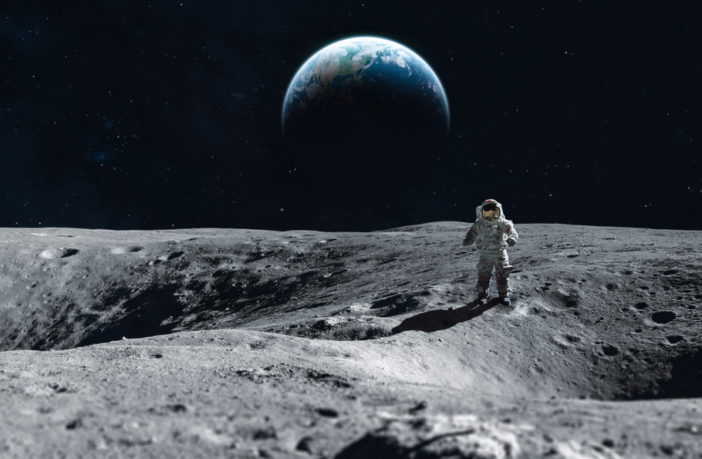

Apollo 11 Commander Neil Armstrong took this photograph with a 70mm lunar surface camera. Apollo astronauts left the camera’s shutter open longer during some photographic experiments. A Man on the Moon In one of the most famous photographs of the 20th Century, Apollo 11 astronaut Buzz Aldrin walks on the surface of the moon near the leg of the lunar module Eagle. But there are some images where you can see stars in space. The result is a clear image of Buzz, but other light sources, like the stars, are too dim to leave an impression on the film.īecause the most important things the astronauts photographed were each other and the Moon’s surface, their cameras were set to capture them in focus - not the dimmer, distant stars. So for him to be visible, you want to choose a fast shutter speed and a smaller aperture. Next, Surveyor probes landed softly on the. The first photographs from the Moon came in 1964 when Ranger 7 radioed photographs back as it plunged into the lunar surface, crashing and being destroyed in the process. Buzz (in his spacesuit) and the lunar surface are going to be the brightest objects in your shot. Nearly 100,000 photographs taken by NASAs lunar probes, Ranger, Surveyor, and Lunar Orbiter, helped to map Apollos landing sites.

Let’s say you’re Neil Armstrong photographing Buzz Aldrin during a bright lunar day. Generally speaking, the brighter the target object, the smaller the aperture and the faster the shutter otherwise, too much light will hit the film, and the photo will be dominated by a washed-out, overexposed focal point. It’s almost like how your pupil constricts on a bright day and dilates at night: Your eye automatically adjusts your aperture so that you can see in different conditions.Ī photographer also has to consider the most important part of the photograph before setting aperture and shutter speed. The water on Earth came from a big collision with the moon, but thats not why the moon is. A smaller aperture means less light, as does a faster shutter speed. A photographer has to consider the lens aperture and shutter speed, both of which control how much light hits the film.


When that plastic is exposed to light through the camera’s lens, a chemical change produces a negative image of whatever is photographed.īut the amount of light isn’t always the same. Film is a light-sensitive emulsion over plastic.
#Man on the moon pictures from space full
Young (1930-2018)- Apollo 10 (orbital), Apollo 16 (landing) full moon space stars night sky galaxy night sun sky nature earth sunset mountain clouds planet dark landscape forest astronaut universe moon surface flowers moonlight love desert sea beautiful cloud city background planets. Space junk on collision course with the moon The moon is about to get walloped by 3 tons of space junk, a punch that will carve out a crater that could fit several semitractor-trailers. Desktop pictures of the moon from space download Download free wallpapers for desktop, Smartphone, Tablet etc. Three astronauts made the journey from the Earth to the Moon twice: James Lovell (Apollo 8 and Apollo 13), John Young (Apollo 10 and Apollo 16) and Gene Cernan (Apollo 10 and Apollo 17). In all, 24 American astronauts made the trip from the Earth to the Moon between 19. Four of America's moonwalkers are still alive: Aldrin (Apollo 11), David Scott (Apollo 15), Charles Duke (Apollo 16), and Harrison Schmitt (Apollo 17). Neil Armstrong and Edwin "Buzz" Aldrin were the first of 12 human beings who walked on the Moon.


 0 kommentar(er)
0 kommentar(er)
